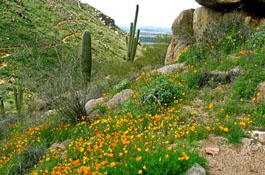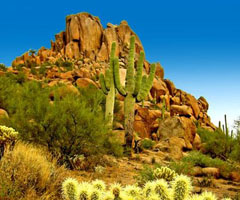 BACKGROUND
BACKGROUND
RELEVANCE
In the 1980s, before the city of
PINNACLE PEAK PARK
The next twenty years brought a series of public meetings and hearings to discuss the concerns of existing park users and residents of the new private communities. Each were concerned that the other would interfere with their hopes for the park and sought to put an end to plans for the park. The city patiently met with all parties involved and various compromises were met to appease the greater whole. The city agreed to staff the park, regulate the hours open to the public, and place signs along the trails.
The park will celebrate its 5th anniversary in 2007 and boasts over 800,000 visitors since its opening in 2002. The vast majority of users and homeowners surrounding the park agree that the park is in fact an asset rather than a detriment as they had originally anticipated. As can be expected, some individuals are still upset, but the greater part of the community has come to love and use the parks natural amenities, facilities, and educational programs.
DESIGN IMPLICATIONS
 Most developers gain economic benefit by retaining green open spaces as part of a development plan; the town and its citizens can work closely with a developer to maintain open space for public use
Most developers gain economic benefit by retaining green open spaces as part of a development plan; the town and its citizens can work closely with a developer to maintain open space for public use- Private uses within the park can be visually screened from existing areas surrounding the park
- Compromises are a means of achieving trade-offs that benefit the majority of the parties involved
- The town, developers, and citizens must be open-minded and patient in the process in order to accomplish the greatest good for the community.
webdesign by chris rose
